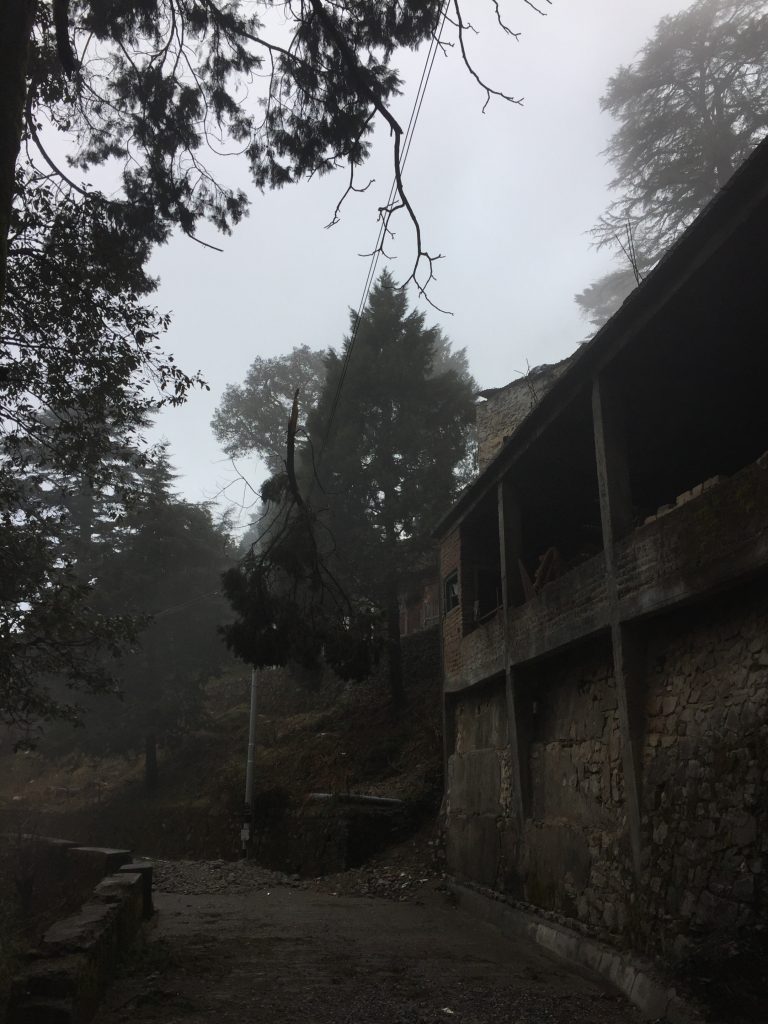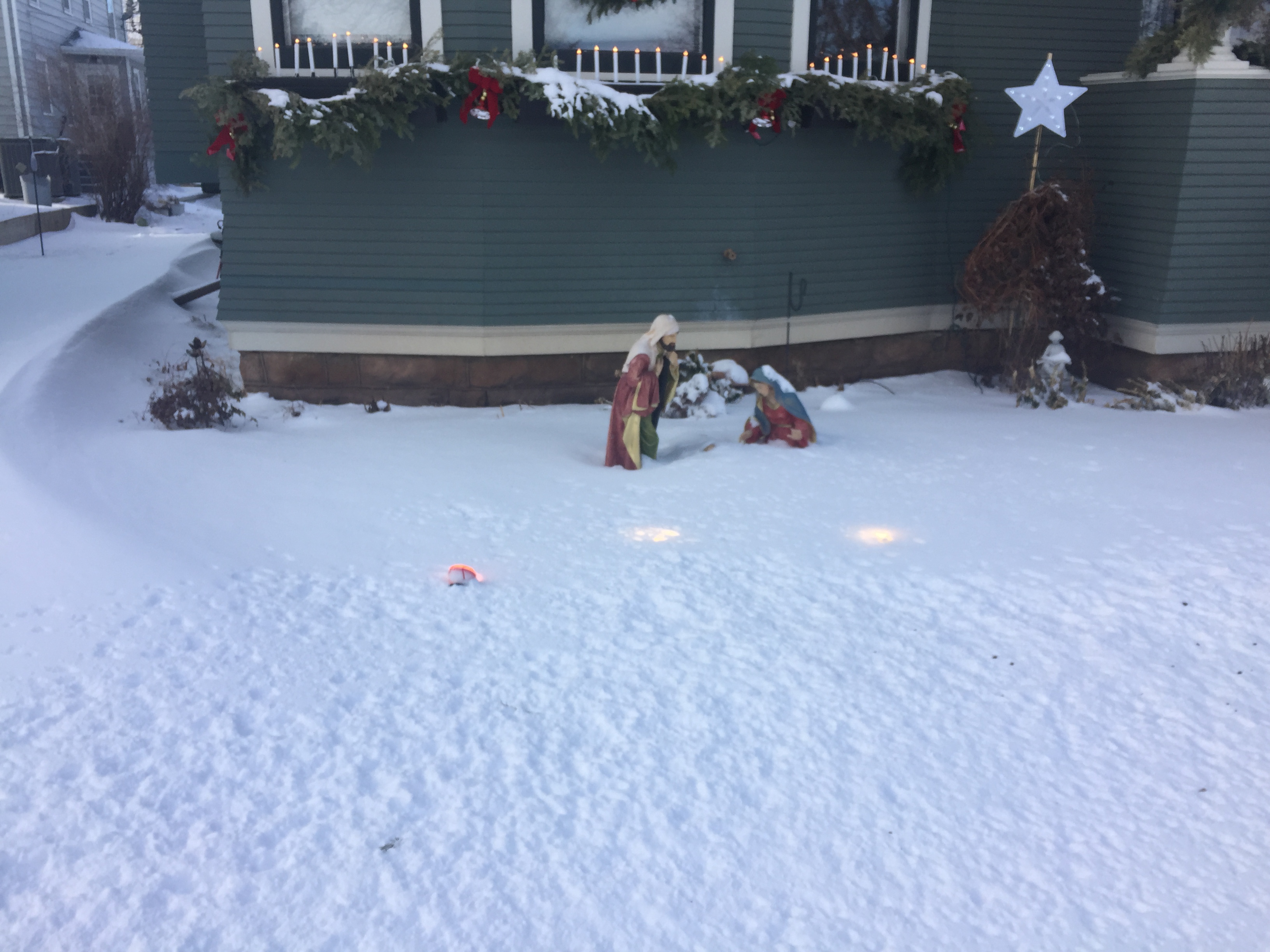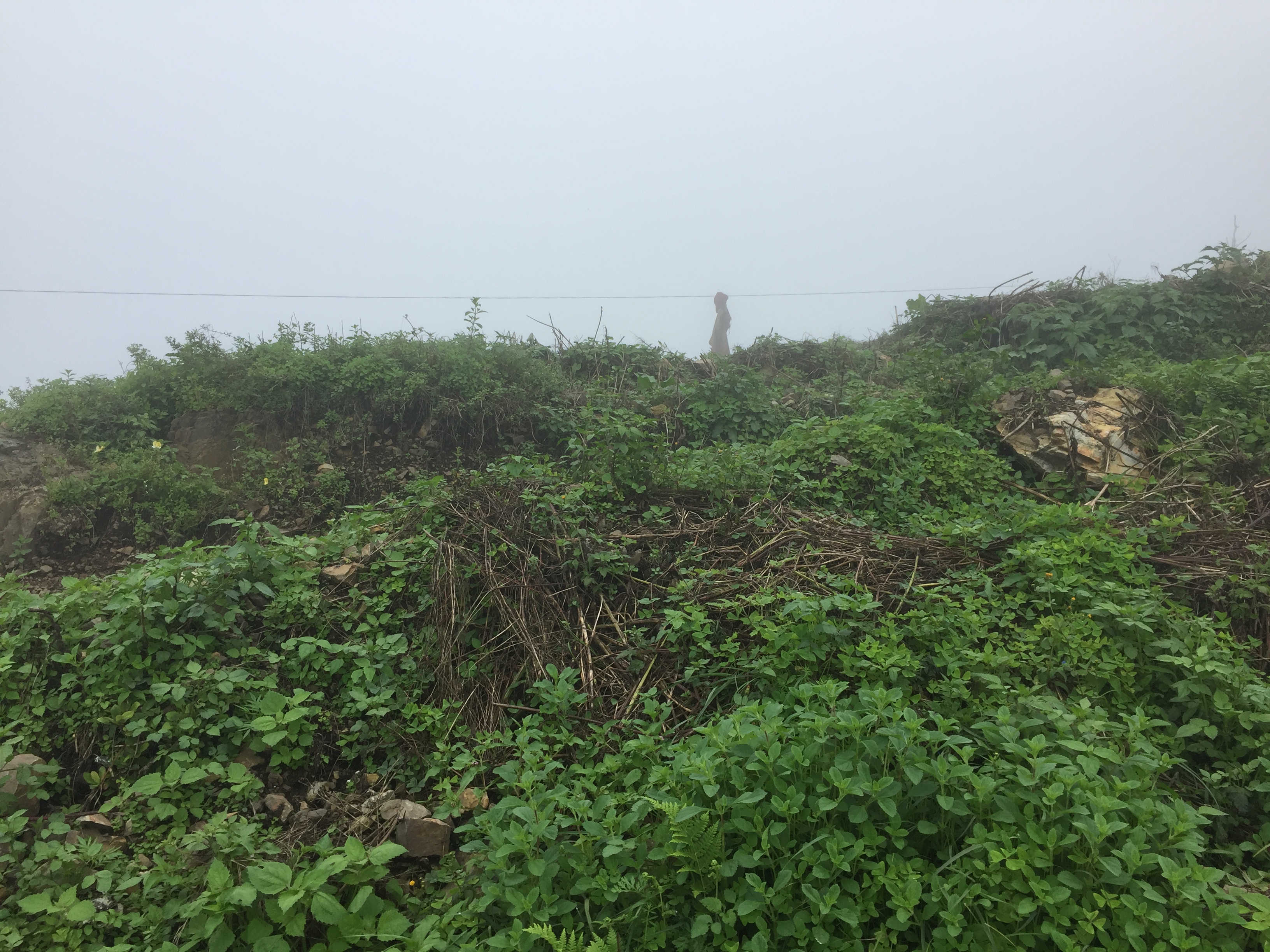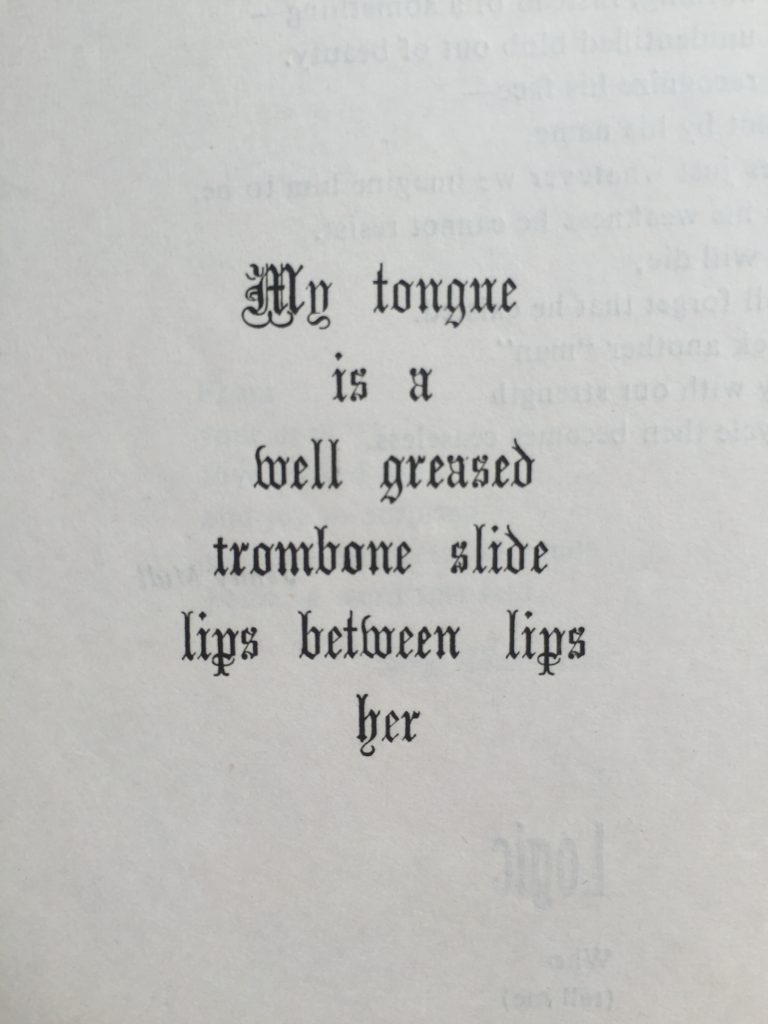post-storm


‘It is likely by design that the ‘The Postcard Depot’ was built near the geographic center of the contiguous United States and, that, in violation of some soft traveler’s code, it stocks a library of postcards from across the country, available for a quarter each (or five for a dollar) and in seemingly infinite quantity. Among Wayside destinations, ‘The Postcard Depot’ stands out as both cleaner and more strictly organized than most. It is broken into sections by state and then alphabetically, by county, with clear tabs to indicate the popular landmarks one might be pretending to visit.
Conspicuously separate from the others are those that state, in one form or another, ‘Wish You Were Here.’ These are kept in a glass case, available at $250 a piece (or five for $1000), with no indication as to why they might be worth more. They are stiff and new, with crisp white borders and razor-sharp edges. These postcards take the ink of a pen as though thirsty for it.
Those in the know would have you believe that the cards do exactly what they suggest, which is to say that they compel the receiver to the advertised location. The cards are wishes in one form, fickle occult contracts in another- they must be sent through USPS- hand delivery will not do- and there are no guarantees as to when the receiver will heed the call. The only guarantee is that the card will sit with them, a window that overlooks a place far away, and nag until they finally crawl through it.’
By the time I understand the consequences of reading the card, it’s too late. The woman has realized I could outrun her indefinitely and now she’s cornered me with an over-priced souvenir. I should have guessed the moment a mail-carrier arrived at my tent in a dusty cornfield in the middle of the night. I should have guessed the moment I saw my full name written across the back, pressed into the cardstock so that I can feel the indention of it on the other side.
The woman compels me to Yellowstone and I turn myself toward it, somewhat relieved to have her in front of me now, rather than behind.
-traveler

‘Summit County, Ohio is home to ‘Old Towne,’ described as your run-of-the-mill reenactment village by colorful brochures found in motel lobbies of the surrounding region. Pictures inside reveal homesteading women hard at work, churning butter or tending fires that heat their theoretical soups in hanging iron pots. They suggest that, for a small fee, bearded men in stiff flannels will guide you in and around their simple (but sturdy) homes and allow you to take selfies in their simple (but sturdy) chairs, marveling all the while at the complicated (and fragile) ‘magic color box’ you keep in your pocket.
The parking lot of ‘Old Towne’ tells a different story.
The complex is walled off, as one might expect, but the entry gates are permanently closed. The townsfolk sealed them from inside shortly after the 2013 grand opening, during which the reenactors were said to have screamed at the sight of waiting customers in their modern clothes and shining vehicles. These events, and several shouted exchanges over the following hours, remain the last verbal contacts that have been recorded with the people inside ‘Old Towne.’ Transcripts consist mainly of accusations of witchcraft, prayers to God, and desperate threats coupled with the clanging of simple (but sturdy) farm tools. The walls of ‘Old Towne’ are not so thick that they cannot be spoken through and they are not so tall that crumpled letters cannot be thrown overhead, but the reenactors have decided to ignore further attempts to reach them and seem to carry on the illusion of homesteaders living out a miniature apocalypse in a makeshift fortress.
Several theories have emerged in the wake of the ‘Old Towne’ apocalypse, the foremost being that this is all some sort of complex art installation (which would explain why an anonymous entity funds new billboards, prints new flyers, and pays property taxes on the land). It does not explain why no charges were brought against the reenactors when, in July 2017, a woman snuck over the wall with a hand-written guide for their reintegration into modern society and was photographed, several days later, hanging from simple (but sturdy) gallows by a helicopter flyover.
Theories from the furthest fringes would have you believe that the apocalypse truly has befallen ‘Old Towne’ and that we are the doom that manifested in 2013 at the beckoning of some unknown force. The world has certainly grown stranger since then, and we, with out flashing phones and roaring engines, torment them so.’
-excerpt, Autumn by the Wayside

The roads I take become more treacherous- narrow and gravelly or too wide altogether and so busy with other vehicles that I am sure I will be crushed between two well-meaning commuters. I go out of my way going out of my way, often losing myself on dead-end service roads when I could be cruising smoothly down the interstate, wondering what music radiates from towers in the distance. I lose myself trying to lose her.
At first, I wasn’t sure how to feel about the woman that seems to be following me. I thought, maybe, I would be brave enough to face her. She has it all wrong, of course. She writes about the burning of beloved roadside attractions (the strangers, remember?), and the extinction of a species of fern (I am not convinced it did not survive the destruction of the Boone radio station). She writes about the body of a man in a rest stop (I tried to save him) and the near-death of a self-proclaimed witch hunter (who nearly killed me, if memory serves). She mentions a run-in with a predatory shadow (as though cut from dark cloth, crumpled, torn, and stretched) and I admit that it might be my carelessness that let it loose on the world. I had assumed the Black Tailor’s false shadow had died long before it tore free from my socks.
What I mean is that everything could be excused in one way or another if I were to just stop and wait a while and prepare for her to speak her piece. That’s what I intended to do at the next comfortable town: spend a little extra time writing a particularly polished entry while she catches up. But Alice has been acting strange, her pick in the speedometer swinging erratically, taking me in wide circles sometimes, leading me down an off-ramp and then back onto the highway.
“What a shame,” I whispered to myself, “This will make me difficult to follow.”
And, with the thought of her further behind me than ever, there came a great sense of relief.
And then I knew I was running.
‘On a planet inhabited by creatures that can fly, swim, climb, and jump, humanity has historically risen above its terrestrial kin in one physical domain: running. We are not the fastest runners, by any means, but we are certainly the most dedicated, capable of wearing down prey and losing predators over distances their own bodies refuse to endure.
‘The Retrospective on the Human Runner’ should be a celebration of this accomplishment, and it does begin that way, providing peer-reviewed back-pats to the men and women who arrive at the building, dressed in athleisure that reveals the rigid definition of their calves. ‘The Retrospective’ takes a sudden turn at its midpoint, however, and becomes a venue for the owner to air their concerns about the current state of humanity.
‘We are still running,’ he writes under an exhibit featuring a man sitting at a desk, filing his taxes, ‘What are we running from? We cannot outrun the inevitable.’
‘This is running!’ he claims of a scene in a strip club.
‘This is running!’ he claims of a woman paying for coffee.
‘We were not meant to go this far- not yet!’ he says of the International Space Station, orbiting the Earth, ‘It isn’t ready!’
‘The Retrospective on the Human Runner’ should be a short museum and, like many things that go on too long, it leaves the visitor feeling tired and hurt and hardly more capable than they felt when they began.’
It strikes me, upon leaving the ‘The Retrospective,’ that I cannot picture the woman behind me in a car. I cannot see her on a bike, like mine, or with a vehicle of any sort. I have a clear picture in my head of what she might look like, and when I hold that image in my mind, I see her running as well.
-traveler

‘It’s said that there is a tale for every visitor on the shelves of ‘The Library of Urban Legends,’ though the trick, of course, is understanding which is written for whom. Take, for instance, the story of a woman who shook hands with a thing that lurked in her apartment’s garbage chute, only to be pulled inside when she (objectified, first, and later devalued) became garbage herself. Or the man who tried to stage his own kidnapping, who locked himself in the trunk of his car and died weeks later (drinking his own urine and chewing his belt), not because his neighbors did not hear his screams, but because they heard and chose to ignore him. Or the story of a man who shaved his head so smoothly that the world was reflected there just as it was around him (though warped by the curvature of his skull) and who became haunted by thoughts of passersby and their reflected bodies stretching across his scalp, dancing wickedly like candle flames and offering offense to their progenitors. Or the child who slipped into a manhole (its cover lifted and concealed by a flooding street) and who can be seen splashing about on the underside of puddles in the city, the treads of her shoes heavy with mud.
For whom could these tales hold morals?
It is difficult to say whether ‘The Library’s’ run-down aesthetic is by design or due to budgetary restraints. On the one hand, many of the legends (hand-written and folded into haphazard pamphlets) have been lost to hungry insects (or censored by them, who’s to say?). On the other, ‘The Library’ proudly touts what is has dubbed ‘The Whisper Bank,’ its first venture into the digital age. Three kiosks now allow visitors to experience the urban legends as they were meant to be, whispered by voices that seem to half-believe what they are saying- that seem to await the approval of the listener before laughing, as though the story were a joke, or sinking into despair with the understanding that they may very well be real and that the world may have a dreadful sense of irony about it.
Standing in ‘The Library’s’ towering core, it strikes the author as strange that legends of the past spoke of great deeds, that the stories we tell each other now are necessarily tragic.’
I arrive, finally, at ‘The Library of Urban Legends’ and recognize that I have passed it many times. It is situated in a repurposed grain silo, narrow platforms and thick shelves spiraling up the length of structure, terminating in darkness. The outside is clean and smooth- a clever urban camouflage. A run-down silo would attract people, people like myself, who have an eye for the Wayside’s eccentricities. A maintained silo in the countryside may as well be the opposite of a lighthouse on the coast: a building that deflects attention.
For all the work I have put in to finding this place, I have to force myself to stay. It is cramped, claustrophobic. The kiosks whisper incessantly through headphones that dangle off their pegs and the noise creeps up the cement like an infestation of ants. The stories are as unfriendly as the building, as unfriendly as the man who sits at a desk near the door and watches me, wordlessly, though I assure him I am only here to look for one thing.
I look for something like ‘Autumn by the Wayside,’ a part of me still hoping either that there is some fiction to what I have seen or that the same symptoms of the country’s madness have been captured in these papers. A single overlap would be enough to prove that I am not the sole witness to all of this, that someone else has glimpsed it too, even if only through their peripheries.
And I find it.
Someone has written of the drive-in. Someone else has written of an angry, impotent scarecrow in the center of a corn maze.
Someone has written of me- a man with the appearance of a broken porcelain doll, repaired by children. A man whose arrival portends strange events- sometimes violent ones.
Someone has done more than write- someone is following me, curling her toes in my boot prints and sleeping in beds that I have warmed. She is behind me, somewhere, has been for some time, and she is sure that I am as toxic as the exhaust from my bike.
-traveler
© 2024 · Dylan Bach // Sun Logo - Jessica Hayworth